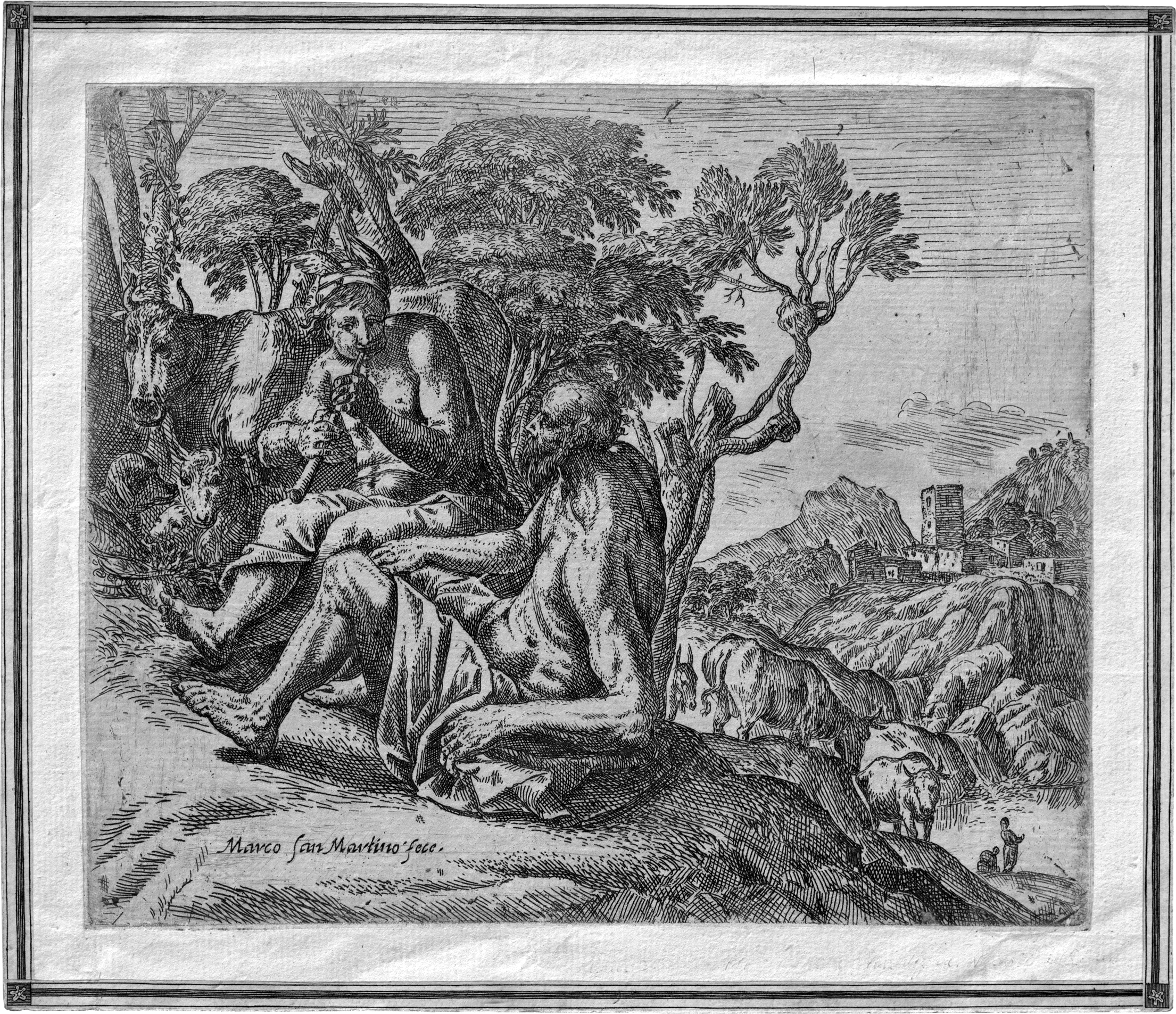Loading the page ...
Marco San Martino
(1615/25 probably Naples – 1680/1700 Venice)
Mercury and Argus. Etching. 20 x 23.9 cm. B. 19, TIB (Commentary) .019.
Comparatively little is known to date about the life of the painter and etcher Marco San Martino, who was born in or around Naples, and researchers have so far paid little attention to his work. This probably has to do, amongst other things, with the fact that only a few prints of each of his etchings and a mere handful of his paintings have survived. Moreover, the many journeys San Martino undertook through Italy mean that he cannot be assigned to any particular school, while his idiosyncratic etching style makes him something of an odd man out. One of the main characteristics of his prints is that they were evidently produced at great speed and were almost never reworked, as a consequence of which subsequent printing states can only be verified in extremely rare cases. Moreover, many of his works, regardless of whether they show sacred, mythological or genre-like scenes, feature motifs of cattle grazing or peasants. Paolo Bellini points out that the artist was often very ingenious in his compositions and that his modest, artistically unorthodox oeuvre was apparently not intended as a kowtow to the complex art practices of his time but was compiled simply for his own pleasure.
The present etching depicting Mercury and Argus is very rare and only a few impressions of it have survived. There is another version on the same subject matter, but Bartsch was only familiar with the present interpretation which, in contrast to the second version, bears the artist’s signature at the bottom left. San Martino’s drawing used for the second version depicting Argus the guardian already beguiled by the sound of Mercury’s flute is in the Kupferstichkabinett of the Hamburger Kunsthalle (brush drawing in red, red chalk, brown wash, 20.4 x 24.5 cm, inv. no. 21414). A fine, slightly tonal impression of the first state with tiny thread margins around the platemark and traces of the damaged plate in the top left-hand corner, which are present in all the known impressions. On the mounting of the collection of Conte Jacopo Durazzo (1717–1794).
Contact us for further information